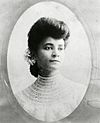Spanish nursery rhymes facts for kids
Nursery rhymes (Spanish: rimas infantiles) in the Spanish language have been passed down by oral tradition. They may be classified according to their amusing, educative or soothing qualities.
Classification by function
One possible method of nursery rhyme classification is that of function. Although it is possible that one song may fall under more than one category, each has a different goal or purpose:
- Play songs or De Juego
- Lullabies or Nanas/Canciones de cuna
- Tongue-twisters or De habilidad
- Teaching songs or Didácticas
Examples
Los Pollitos Dicen ("Little Chickens") is a classic Spanish Nursery Rhyme De juego, and also falls under the Nana or Cancion de cuna category. Many spanish speaking countries lay claim to this song such as Ecuador and Spain, but its author is the Chilean musician and poet Ismael Parraguez. Its popularity is similar to that of "Twinkle Twinkle Little Star" in English.
Los pollitos dicen
pío, pío, pío
cuando tienen hambre
cuando tienen frio.
La gallina busca el maiz
y el trigo
les da la comida y les
presta abrigo.
Bajo de sus alas,
acurrucaditos
duermen los pollitos hasta
el otro día!''
Little chickies squeal,
pio pio pio,
When they are so cold, and when
they want a meal.
Mama goes and gets them corn
from the field,
serves them each their food, and
warms them head to heel.
Chickies sleep so yummy,
snuggled up with mommy,
And that’s just where they’ll stay
until another day.
 | Selma Burke |
 | Pauline Powell Burns |
 | Frederick J. Brown |
 | Robert Blackburn |

